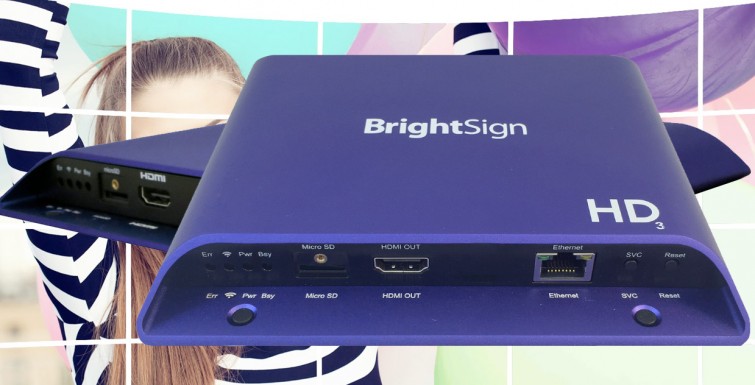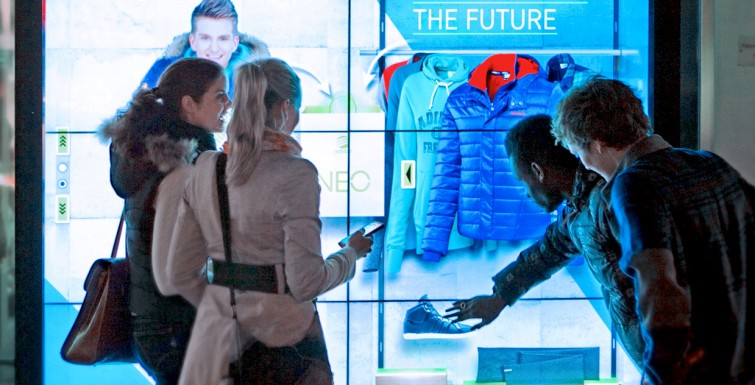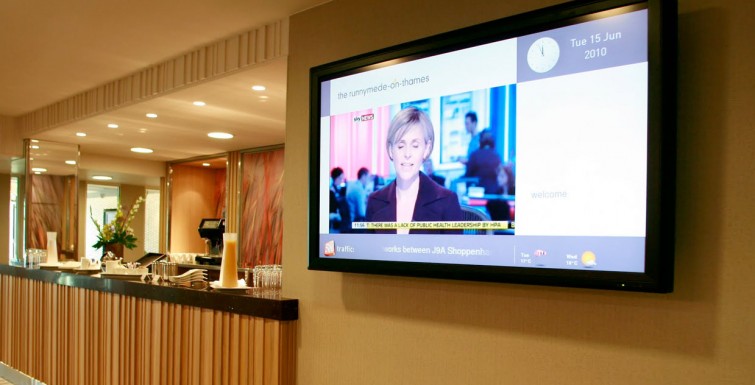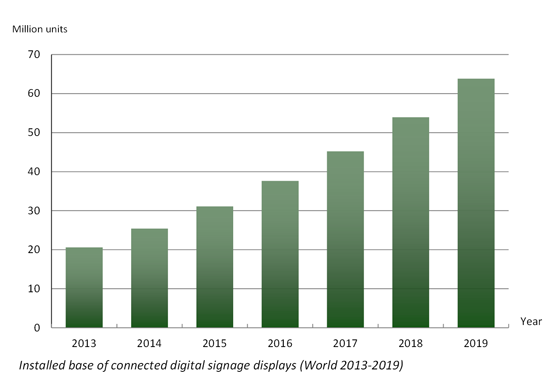BrightSign, LLC®, the global market leader in digital signage media players, today announced the first major overhaul of the company’s players in nearly two years. BrightSign’s lineup of digital signage media players has been completely redesigned and will ship with a portfolio of technology updates including an M.2 interface for Wi-Fi antennae or a solid-state drive (M.2 SSD). BrightSign’s free BrightAuthor software and the BrightSign Network are also updated with advanced digital signage features for enterprise-level performance.
“The digital signage marketplace is evolving rapidly. For that reason it’s important that our technology solutions not only support signage as it’s being used today, but that they also work flawlessly many years from now,” said Jeff Hastings, BrightSign’s CEO. “Customers can install our players today knowing that BrightSign software, hardware and networking solutions will serve them well in the future as they implement new and exciting digital signage features.”
BrightAuthor software v4.5 will enable a new feature on the HD, XD and XT players called Mosaic Mode, which allows a multitude of lower-resolution videos to be played in multiple video zones that add up to the total resolution decoding power of the player’s video decoder. CEA HDR 10 is supported on all players delivering a much higher contrast ratio and much wider color palette, complementing the higher resolution of 4K displays. And the ability to real-time encode and stream content from the player to another end-point or device is now incorporated in XD and XT players.
B-Deploy, a powerful new feature that allows customers to set up and deploy from tens to thousands of players all at once, can be used with the BrightSign Network, a BrightSign Partner CMS, or an on-premise secure corporate LAN with internet access.
BrightSign Network, including the new B-Deploy feature, now supports media and player tagging for highly targeted content distribution to large networks of players.
Each of the seven new players boasts a sleek new industrial design with a very slim profile under 1” in height that makes it possible to place the players virtually anywhere. All new players integrate H.265 (HEVC playback features) and HTML5. The top two product lines (XD and XT) offer a hardware-accelerated H.265 video decoding engine capable of 4K HDR 10-bit video playback.
BrightSign’s portfolio of digital signage media players is now comprised of seven players spanning four product lines:
BrightSign LS: Affordable, Compact and Fully Featured
BrightSign’s LS423 is a fully featured, commercial-grade player offering a superior alternative to consumer devices often chosen for price-sensitive digital signage installations. Based on the award-winning BrightSign HD platform, BrightSign LS423 delivers signature reliability and affordability, with a robust feature set including H.265 Full HD video decoding, a basic HTML5 engine, USB 2.0 type C, and networking.
BrightSign HD: Updated Classic with Mainstream Performance
BrightSign’s new HD models are updated with advanced technology that delivers power and performance for mainstream applications at a very affordable cost. Both the HD223 and HD1023 offer hardware-accelerated HTML5 engine and 1080p60 decode, along with BrightSign’s highly reliable media-handling platform and signature ease of use. All HD models support Gigabit Ethernet, as well as robust interactive controls and dynamic live content features.
BrightSign XD: True 4K Playback and Advanced Performance
BrightSign’s two new XD players are capable of decoding either two 1080p60 videos or a single 4K video and a single 1080p60 video simultaneously. Both the XD233 and XD1033 have Gigabit Ethernet and offer an advanced hardware-accelerated HTML5 engine.
BrightSign XT: State-of-the-Art Technology with Enterprise Performance
The BrightSign XT243 and XT1143 offer unsurpassed performance with the company’s fastest HTML and graphics engine and the most powerful CPU. This state-of-the-art technology for enterprise level digital signage installations supports dual video decode of one 4K and one 1080p60 video simultaneously. The hardware-accelerated HTML5 engine enables flawless playback of multiple modular HTML5 assets including CSS animations, Web GL and swipe/gesture interactivity. Both XT models support PoE+ and Gigabit Ethernet, and the XT1143 offers HDMI-in for Live TV playback.
For more information about BrightSign’s complete portfolio of digital signage hardware and software, contact Vision One on (03) 9467-3777.





